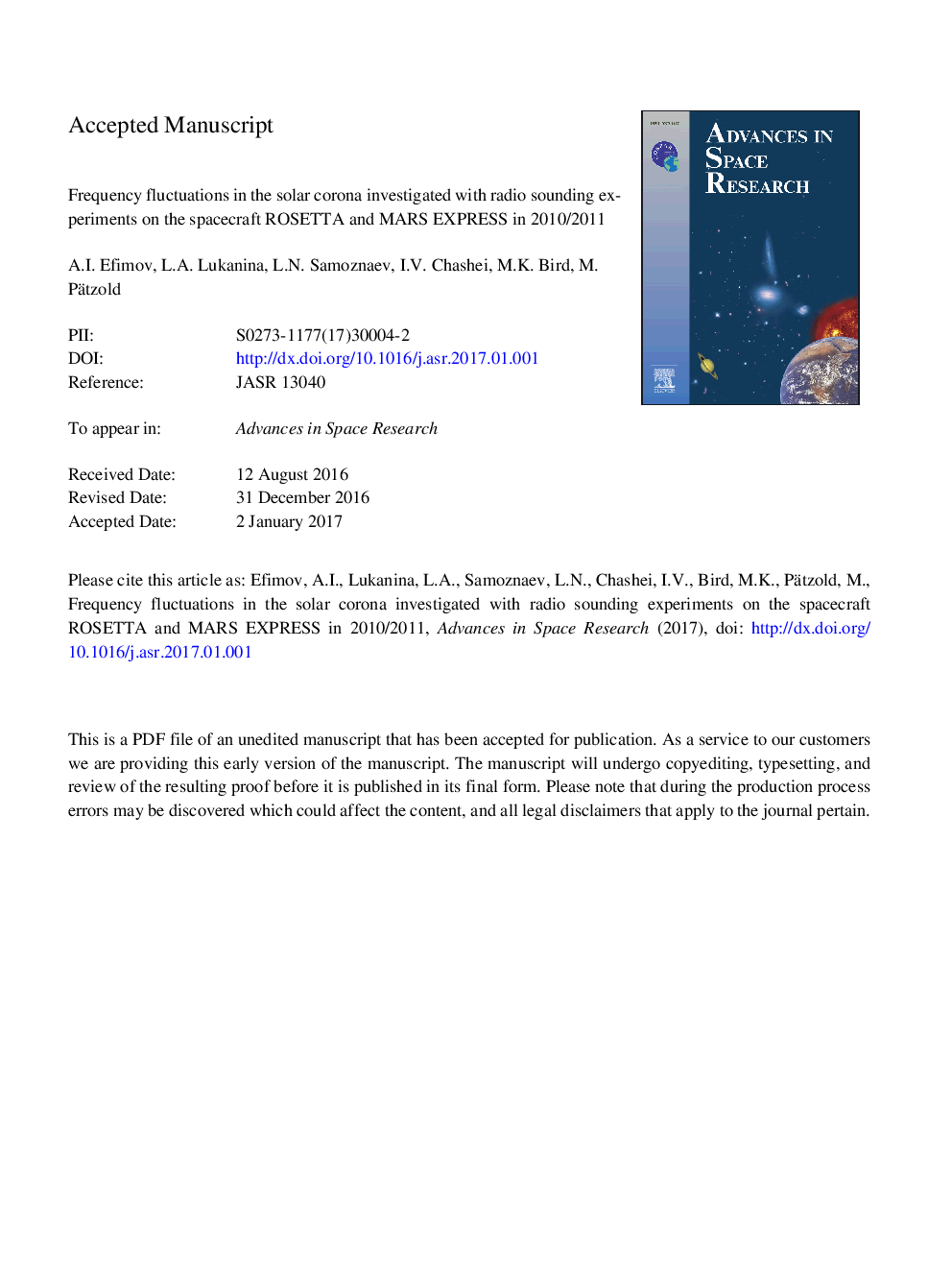| Article ID | Journal | Published Year | Pages | File Type |
|---|---|---|---|---|
| 5486244 | Advances in Space Research | 2017 | 22 Pages |
Abstract
Coronal radio-sounding experiments were carried out using two-way coherent dual-frequency carrier signals of the ESA spacecraft ROSETTA in 2010 and MARS EXPRESS in 2010/2011. Differential frequency measurements recorded at both NASA and ESA tracking stations (sample rate: 1 Hz) are analyzed in this paper. Spectral analysis of the S-band, X-band, and differential frequency records has shown that the r.m.s. frequency fluctuation of each signal can be described by a radial power-law function of the form Ïi = Ai(R/Râ)âβi, where i = s, x, sx. The ratio of the coefficients As and Ax differs from the expected theoretical value As/Ax = fs/fx. This occurs because the X-band fluctuations underlie two-way propagation conditions while the S-band fluctuations are essentially the product of a one-way propagation experiment. The intensity of the frequency fluctuations decreases sharply at high heliolatitudes. The asymmetry of the frequency fluctuation intensity between ingress and egress is exploited to determine the solar wind speed at small heliocentric distances.
Related Topics
Physical Sciences and Engineering
Earth and Planetary Sciences
Space and Planetary Science
Authors
A.I. Efimov, L.A. Lukanina, L.N. Samoznaev, I.V. Chashei, M.K. Bird, M. Pätzold,
